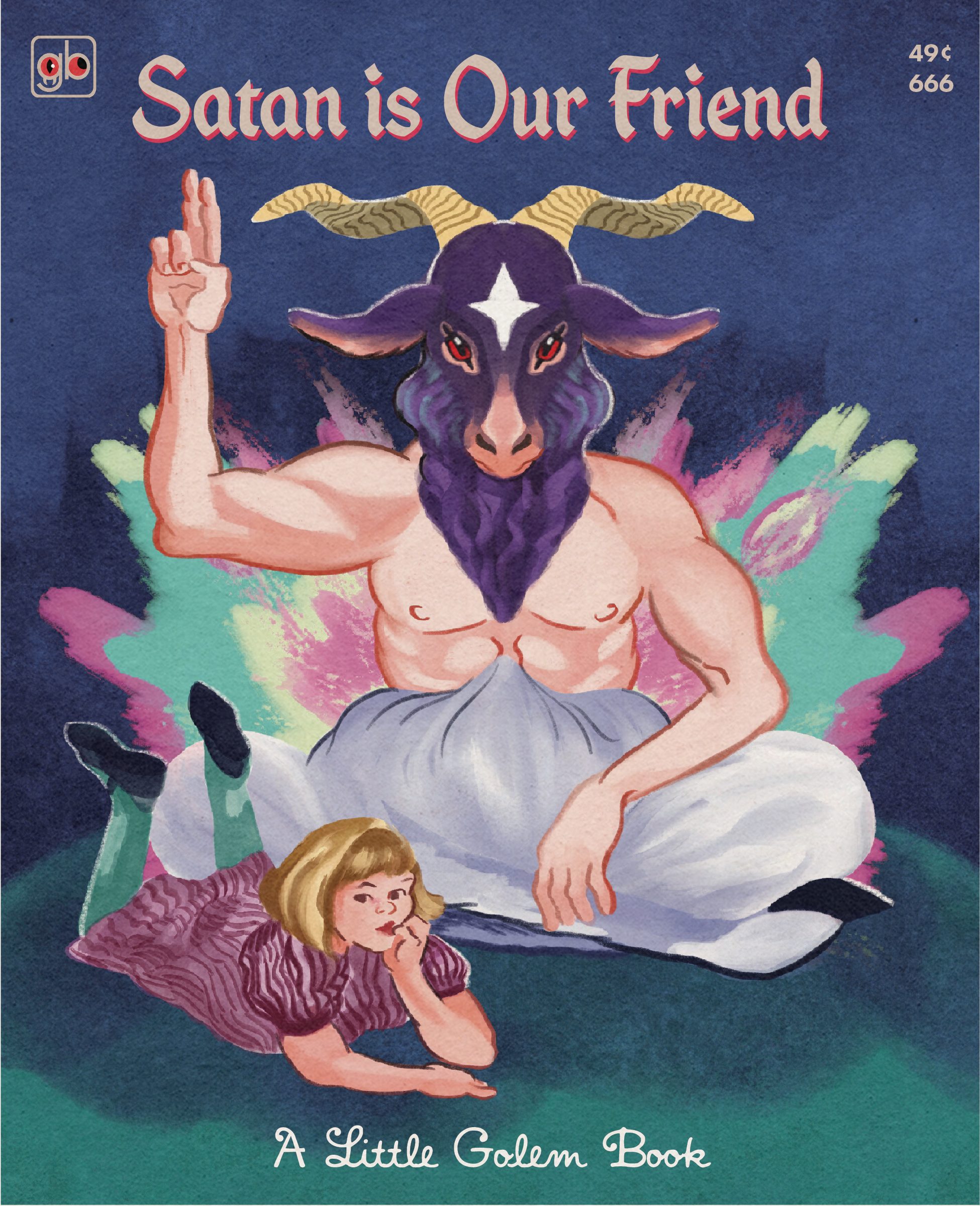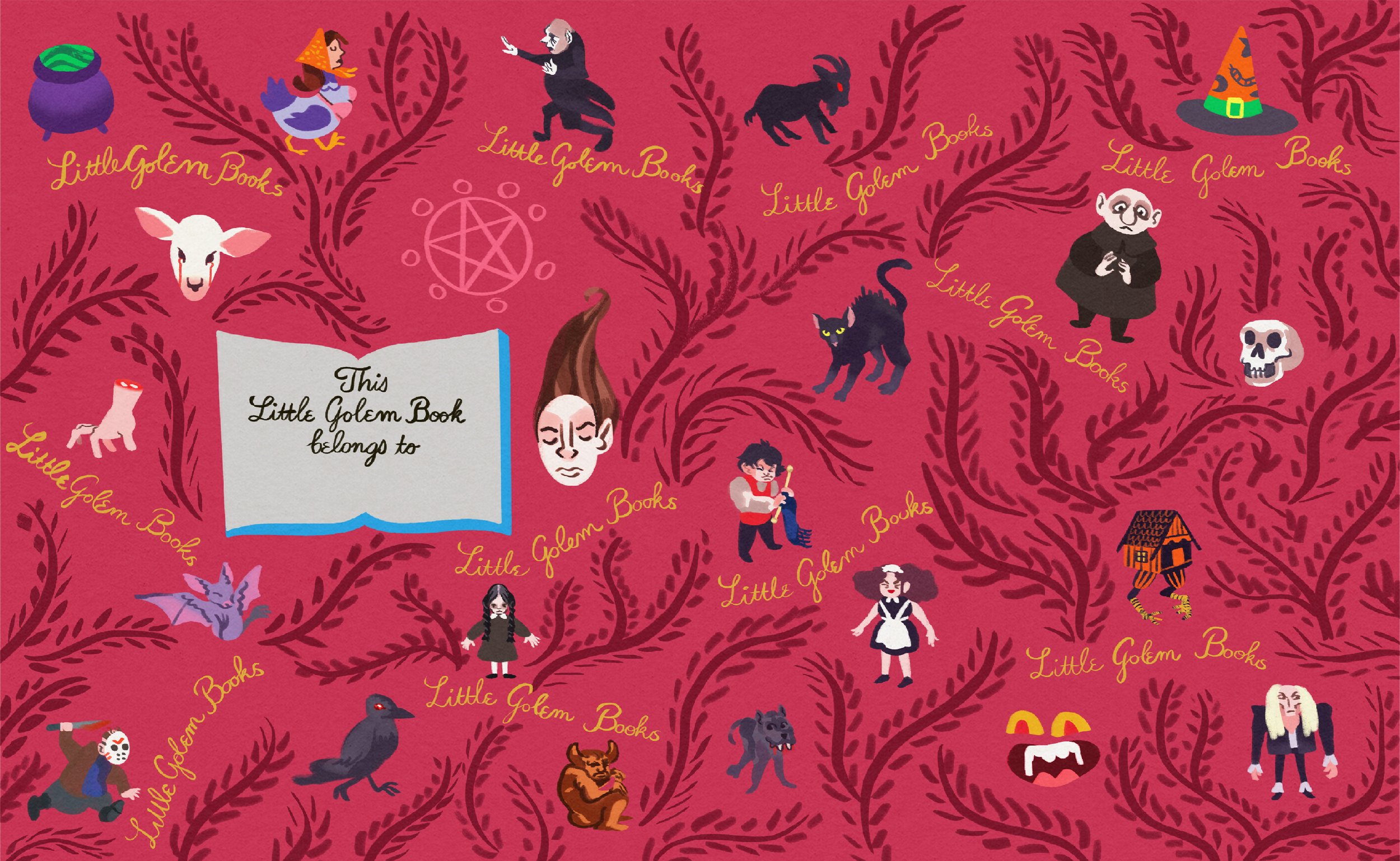
Satan Is Our Friend
“Satan is Our Friend” from the hypothetical Little Golem Books series is a satirical Children’s Book for Grownups. It was created under the art direction of Paul Kepple of Head Case Designs, and its visual design and style of illustration has been carefully modeled after The Little Golden Books series, particularly those released in the 1950’s and illustrated by Corrine Malvern. The content of the book is meant to be a satire on the Satanic Panic, conservative Christian rhetoric and juvenile indoctrination.The blending of classic children's book visuals with darkly humorous story content is meant for readers who have an irreverent sense of humor and a love of vintage illustrations.
Context: The Satanic Panic
The satanic panic is a moral panic consisting of over 12 thousand unsubstantiated cases of Satanic Ritual Abuse starting in the United States in the 1980’s and spreading through many parts of the world by the late 1990’s and persisting today. The panic originated in 1980 with the publication of Michelle Remembers, a book cowritten by Canadian psychiatrist Lawrence Pazder and his patient Michelle Smith which used the discredited practice of recovered memory therapy to make sweeping lurid claims about satanic ritual abuse involving Smith. The allegations which afterwards arose throughout much of the United States involved reports of physical and sexual abuse of people in the context of occult or Satanic rituals. At their core, satanic ritual abuse claims rely on overzealous law enforcement, unsubstantiated statements from children, and, above all, coercive and suggestive interrogation by therapists and prosecutors. Some of the defendants involved in these cases are still serving life sentences for crimes they didn’t commit — and which likely didn’t happen in the first place.The legacy of Satanic Panic is now deeply interwoven with American culture and politics — all the way through QAnon and beyond.
















The premise of the book is to lean into the wild and unsubstantiated claims of the conservatives on the concept of Satanism and subvert them in a way that drives at the heart of where Conservative Intolerance is really going wrong. For the purpose of this narrative, I thought it’d be fun to explore the particulars of what Devil Worshippers supposedly do (slaughter goats and such) and reframe them in this cutesy, Corinne Malvern stylization that’s packed with interactive elements. The motivation stemmed from my sense of sympathy for the character of Satan in the grand scheme of things, and my mistrust of the indoctrinating nature of the Christian and especially the Catholic establishment, with regard to its concentration on Young Children which contrasts heavily with the horrifying hidden history of child abuse in the Catholic Church. I want to see The Devil as a heroic or at least Warm Fuzzy Figure because if not him, who are we supposed to trust? God? Jesus? I think not.
Overall the central figure of the work was my take on the Goat Figure of Satan, which I really wanted to be my own design. I was very keen on avoiding the stereotypical Red color palette often associated with the character, so I focused on using softer colors like purple and green. The overall color schemes were shaped by those in Steven Universe, as the story really inhabits this sleepy kind of celestial pocket of the universe that’s removed from the Christian dichotomy of yellow sunsoaked heaven and the glowing pits of hell. Inthis fictional iteration of Satanic lore, Hell does not exist, Satan does, but he doesn’t live underground with all the dead people. He’s supposed to be like what God should have been, in a world of free thinking. He’s solidly built as a loving figure, warm and encouraging to curiosity and inquisitive behavior. And the occasional goat slaughter.
The book is presenting the Devil as a source of strength that acts as a foil to the oppressive authority of the mainstream Church. The goal of the book is not to demonize Christianity or present a negative view of the Church. Rather, it is to show a different interpretation of what it means to have faith, and that that love and understanding can be inspired by even the most unorthodox and unconventional of stories and characters. The ultimate goal for the book is for the reader to play with the ideas presented, to form their own opinions and to come up with their own interpretations.
Satan is Our Friend knowingly plays on the moral panic of Satanism to communicate a subversive message of hope, love, and acceptance. It is both a parody and a statement. The goal is to use this Little Golden Book satire to offer a way out of a dreading, all-consuming world of paranoia and blame. It does so by depicting a world in which Satanic Worship doesn’t lead to destruction, but instead leads to a kind of secret utopia full of curiosity and inquisitive behavior, which enables a better understanding of what is out of the ordinary. We may not all be on the same page when it comes to how to interpret the Bible, or who should lead a Church, but we can certainly all agree on the message of “Satan is Our Friend”: that embracing our differences and respecting each other, no matter how “spooky” others may seem, can lead to a better society. The Little Golem Books are meant to be a call to action for us all to take a step back from the fearmongering and hatred that often surrounds us and to look at our differences in a new light. It offers us an opportunity to embrace our diversity and to find peace despite the chaos that seems to be getting worse by the day.
The work “Satan is Our Friend” and the concept behind Little Golem Books is also meant to be a work of world building prop design, as I’m intending for the object and IP to be used in a cinematic universe I’m working on about Satanic Boy Scouts in which Satanists inhabit a paradoxical world in which demons and Satan are viewed as respectable and family friendly subjects of social core values, much like The Addams Family.




